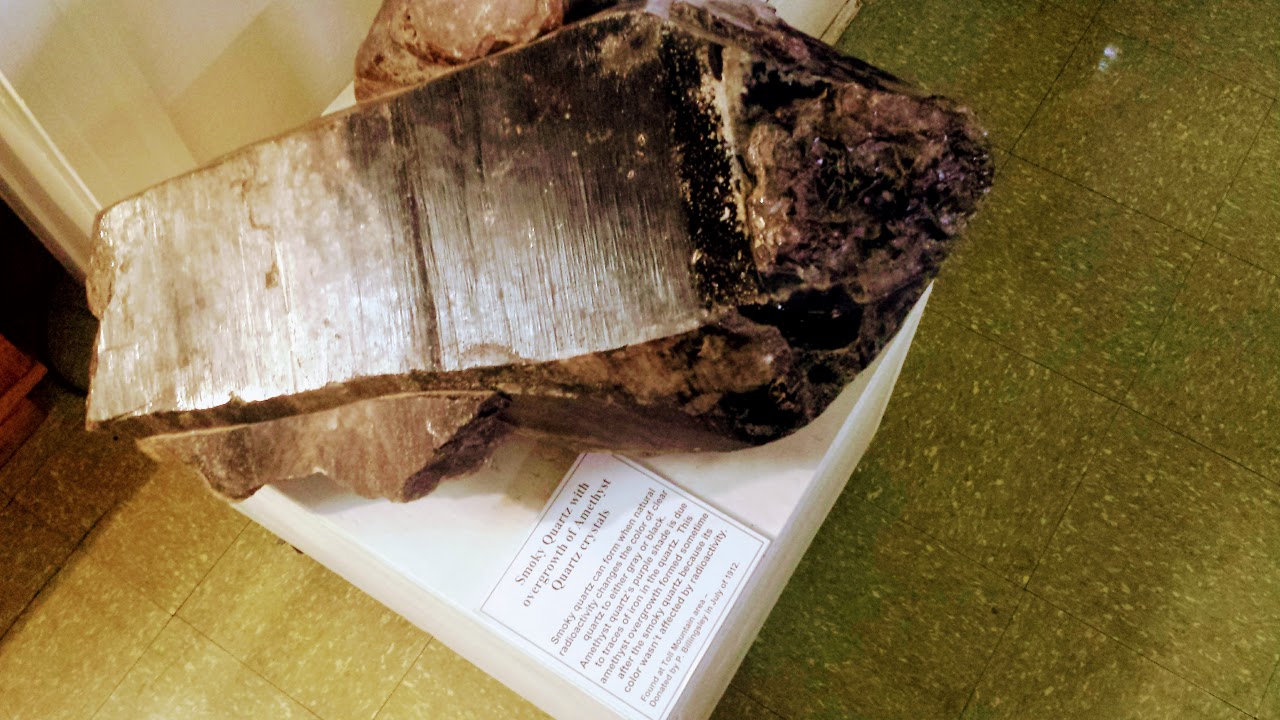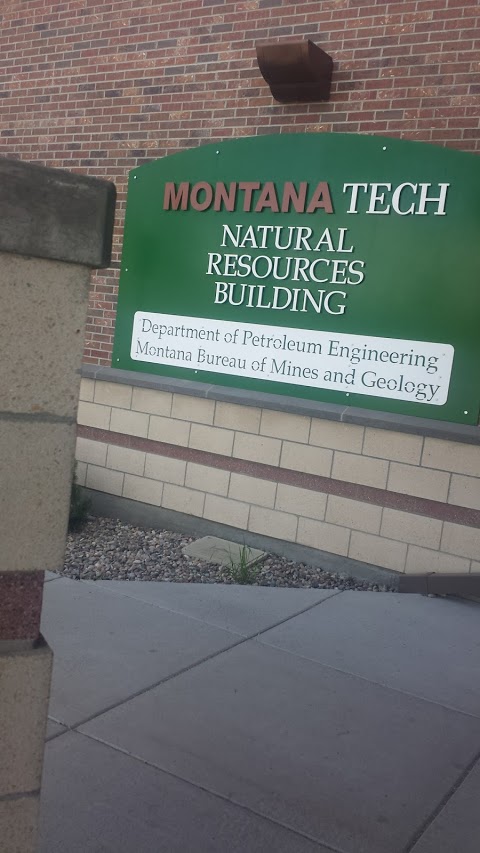
Outing Reviews 2017
Butte, MT May 12th, 2017
The Montana Bureau of Mines and Geology
In Montana this is the source of all information about geological and mining history and its effects. Our ancestors knew the records and core source of this information for posterity was very important because it was instituted in 1901, shortly after Montana becoming a state. A visit to this site in Butte, Montana can substantiate this very fact.
If you played King of the Hill as a kid, you can find Montana Tech; it’s at the top of the Butte hill and is well marked so you can find it way at the back of several buildings that are connected to each other. It is found on the 3rd floor and is huge overlay of collections from a myriad of contributors for centuries. The gifts that have been presented to the Bureau are evident all over the room and offer tantalizing memories of just how they all got in this one room.
The assistant, John Foley, greets you, listens and shares his expertise. One of the first things he did was what was mentioned on the website, he can identify any rock that you want figured out. Delbert Henry of Great Falls asked to have his black rock with fool’s gold at the end identified. John went to his office quickly, examined the rock and came back with the verdict all written out. What a service! I will be happy to return Delbert’s rock with the truth about what his treasure is. If you have questions about rocks and what they are, you can do the same thing too with the service that is offered.
The token dinosaur looms above you and there are a sea of cases of rocks on display. I was curious about all the 16,000 rocks possessed but not displayed. There were examples from Montana, the US and the world. I took a picture of the African collection just so my African friends can see the idea we honor their geological history as well. Rocks rock everywhere, especially in the sea of interest at Montana Tech and the Bureau. After perusing the availability to get materials to take home, study and share, Mr. Foley directed me to the other building on campus that houses the other part of the Bureau.
It’s not only the examples, it’s the records too!
With a quick trip down the campus trail the main area of the Bureau was evident. The reception area houses the documents, maps and information available. John Foley took me down the hall to the archival area where there was lots to learn. Peggy Delaney, Program Leader for the Mining Archives, had an array of computers she could access as she looked for records. All I had to do is mention to her the whereabouts of one mining claim and she could fly overhead into the county on her computer, look down close at the land and tell you who owned it and whether there were records in her files on the claim or not. We searched out a variety of spots as I was curious of a Utica site, Neihart other Lincoln ones.
The archival office area houses records on Montana property that has been garnered from claim information, groups of claims, mine, and project /exploration development. If one wants information on any area you need to know the township, range and section of land you are inquiring about. The geological map gives graphical pictures of our state and any information is listed by county so any city has to be connected with a county; county name is the access portal.
Reference Materials Galore
If you want to know mining and geological history of Montana this is the place to go. The richest hill on earth spawns the most information about its rock richness. As Peggy Delaney was demonstrating examples of accessing mining history on her office computer, she would have opinions of websites that assist one’s needs. When she went to the BLM site she commented that their site was just changed and it was “terrible; you can’t find anything. They went from great to bad with the switch.”
Another mention of Montana Cadastral and its offerings, I was still stumbling on the word cadastral as I had never heard that word before. This site delivers lots of information on the rich Montana history.
But one of the best sites for background information on who, what, where, when and why of Montana mining and minerals is the DEQ (the Montana Department of Environmental Quality) website which has a historical narrative section that has extensive, printable material on abandoned mines, lode claims, and the developmental history of mining in the state. She printed up a copy of the Neihart area right from her computer for me to have as that area is close to home and I was curious.
Resources to Lust for
When you are curious about finding valuable rocks, minerals, fossils and gems, the lobby of the MBMG is the perfect place to cast your line into the sea of resources. It is hard to pick what you want to take home with you for using. Do I need a disk for $20 that needs a computer on the road to use in the field, or do I want a $30 laminated colorful hand held flipable booklet of the geological areas all over Montana. Then there is the gigantic foldable open across your entire dash map that is so monstrous it lends itself to irritation for $10? The staff helps you decide the benefits of all.
The Guide to Staking Mining Claims in Montana came home with me along with the desire to be sure to have another book written by their staff member of 30 years that helped all kinds of prospectors in the area with their explorations. I know I will be back and in search of more information. This is the best place to go when you need information about Montana gems, geological history and the basic facts of the search for it all. Loved it!!
















